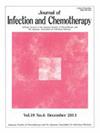日本病毒载量未完全抑制的艾滋病病毒感染者对治疗的满意度和需求:一项多中心、横断面观察研究
IF 1.9
4区 医学
Q3 INFECTIOUS DISEASES
引用次数: 0
摘要
目的探讨HIV感染者(PLWH)病毒载量(VL)抑制状态与治疗满意度、抑郁、焦虑和治疗需求之间的关系。方法于2021年4月至12月进行多中心横断面研究。符合条件的患者根据其在回答问卷前一年的VL分为两组:所有VL和lt;50拷贝/mL(完全抑制组)和至少一个VL≥50拷贝/mL(不完全抑制组)。比较两组患者HIV治疗满意度现状问卷(HIVTSQs)、患者健康问卷-9 (PHQ-9)、广泛性焦虑障碍问卷-7 (GAD-7)及药物制剂需求。结果纳入分析的534例患者中,分别有467例和67例被分为完全和不完全vl抑制组。完全抑制组和不完全抑制组的HIVTSQs总分(中位数[四分位范围(IQR)]分别为59.0[53.0-64.0]和56.0[52.0-62.5],差异无统计学意义。不完全抑制组在HIV控制单项问题上的得分明显低于完全抑制组(5.0 [5.0 - 6.0]vs. 6.0 [5.0 - 6.0], P = 0.001)。各组间PHQ-9和GAD-7总分差异无统计学意义。与完全抑制vl组相比,不完全抑制vl组偏爱每月一次皮下制剂的患者比例更高(16.4%比7.5%,P = 0.028)。结论vl抑制状态与整体治疗满意度、抑郁、焦虑无相关性。然而,在vl抑制不完全的PLWH中,对HIV控制和治疗需求的满意度可能有所不同。本文章由计算机程序翻译,如有差异,请以英文原文为准。
Treatment satisfaction and needs among people living with HIV who have incomplete viral load suppression in Japan: A multicenter, cross-sectional, observational study
Objective
This study aimed to evaluate the association between viral-load (VL)-suppression status and treatment satisfaction, depression, anxiety, and treatment needs in people living with HIV (PLWH).
Methods
A multicenter, cross-sectional study was conducted from April to December 2021. Eligible patients were classified into two groups based on their VL in the year prior to answering the questionnaires: those with all VL < 50 copies/mL (complete-VL-suppression group) and those with at least one VL ≥ 50 copies/mL (incomplete-VL-suppression group). The HIV Treatment Satisfaction Questionnaire: Status (HIVTSQs), the Patient Health Questionnaire-9 (PHQ-9), the Generalized Anxiety Disorder-7 (GAD-7), and the drug formulation needs were compared between the two groups.
Results
Of the 534 patients included in the analysis, 467 and 67 were classified into the complete and incomplete-VL-suppression groups, respectively. The total HIVTSQs scores (median [interquartile range (IQR)]) were 59.0 [53.0–64.0] and 56.0 [52.0–62.5] in the complete and incomplete-VL-suppression groups, respectively, with no significant difference. The incomplete-VL-suppression group scored significantly lower on the individual question for HIV control than the complete-VL-suppression group (5.0 [5.0–6.0] vs. 6.0 [5.0–6.0], P = 0.001). The total PHQ-9 and GAD-7 scores were not significantly different between the groups. The proportion of patients who preferred the once-every-month subcutaneous formulation was higher in the incomplete-VL-suppression group compared to the complete-VL-suppression group (16.4 % vs. 7.5 %, P = 0.028).
Conclusions
The association between VL-suppression status and overall treatment satisfaction, depression, or anxiety was not detected. However, satisfaction with HIV control and treatment needs may differ in PLWH with incomplete VL-suppression.
求助全文
通过发布文献求助,成功后即可免费获取论文全文。
去求助
来源期刊

Journal of Infection and Chemotherapy
INFECTIOUS DISEASES-PHARMACOLOGY & PHARMACY
CiteScore
4.10
自引率
4.50%
发文量
303
审稿时长
47 days
期刊介绍:
The Journal of Infection and Chemotherapy (JIC) — official journal of the Japanese Society of Chemotherapy and The Japanese Association for Infectious Diseases — welcomes original papers, laboratory or clinical, as well as case reports, notes, committee reports, surveillance and guidelines from all parts of the world on all aspects of chemotherapy, covering the pathogenesis, diagnosis, treatment, and control of infection, including treatment with anticancer drugs. Experimental studies on animal models and pharmacokinetics, and reports on epidemiology and clinical trials are particularly welcome.
 求助内容:
求助内容: 应助结果提醒方式:
应助结果提醒方式:


